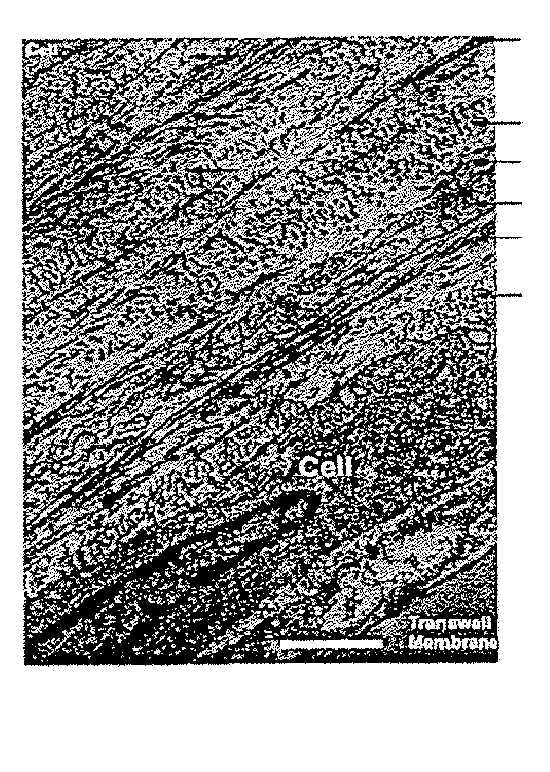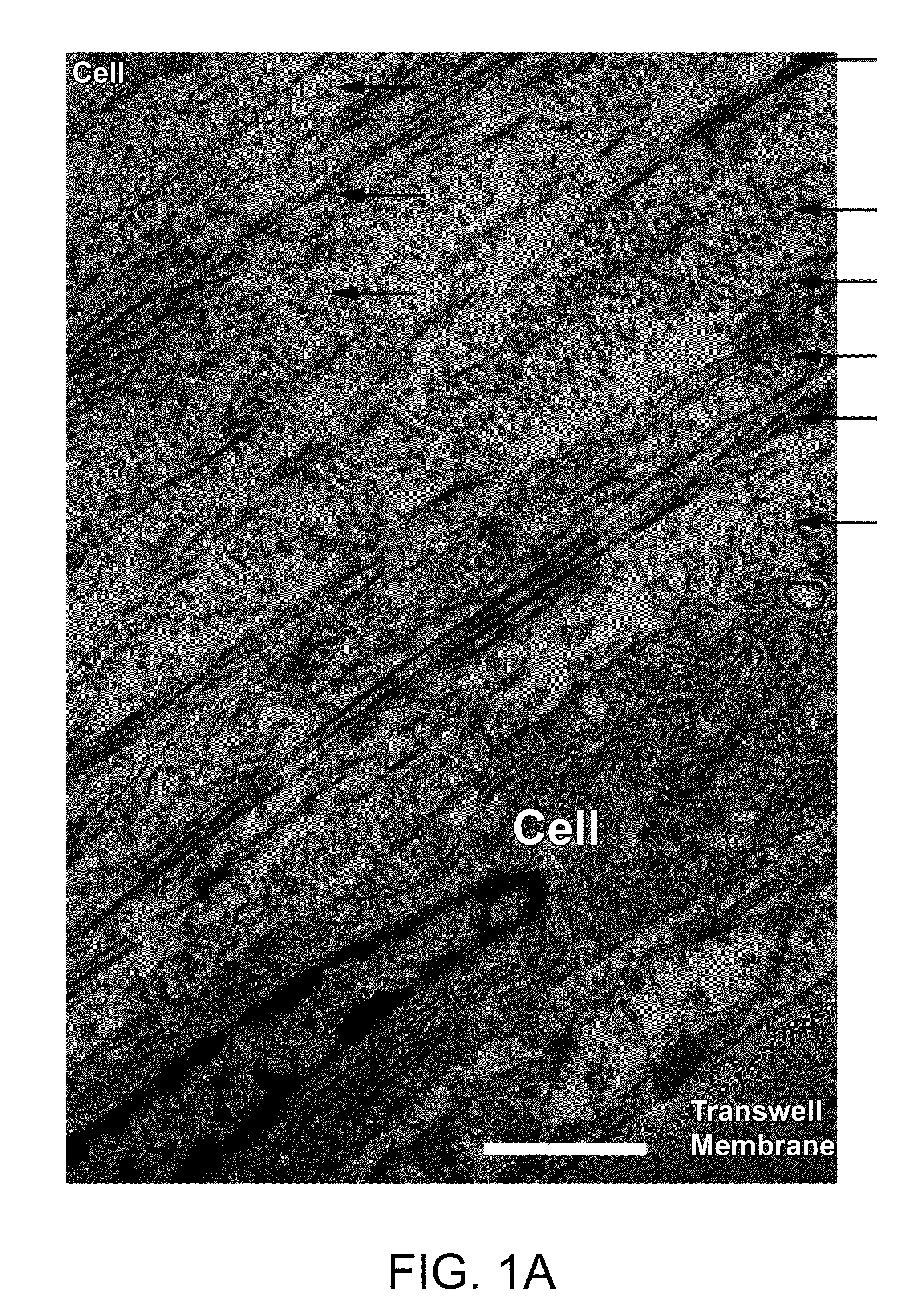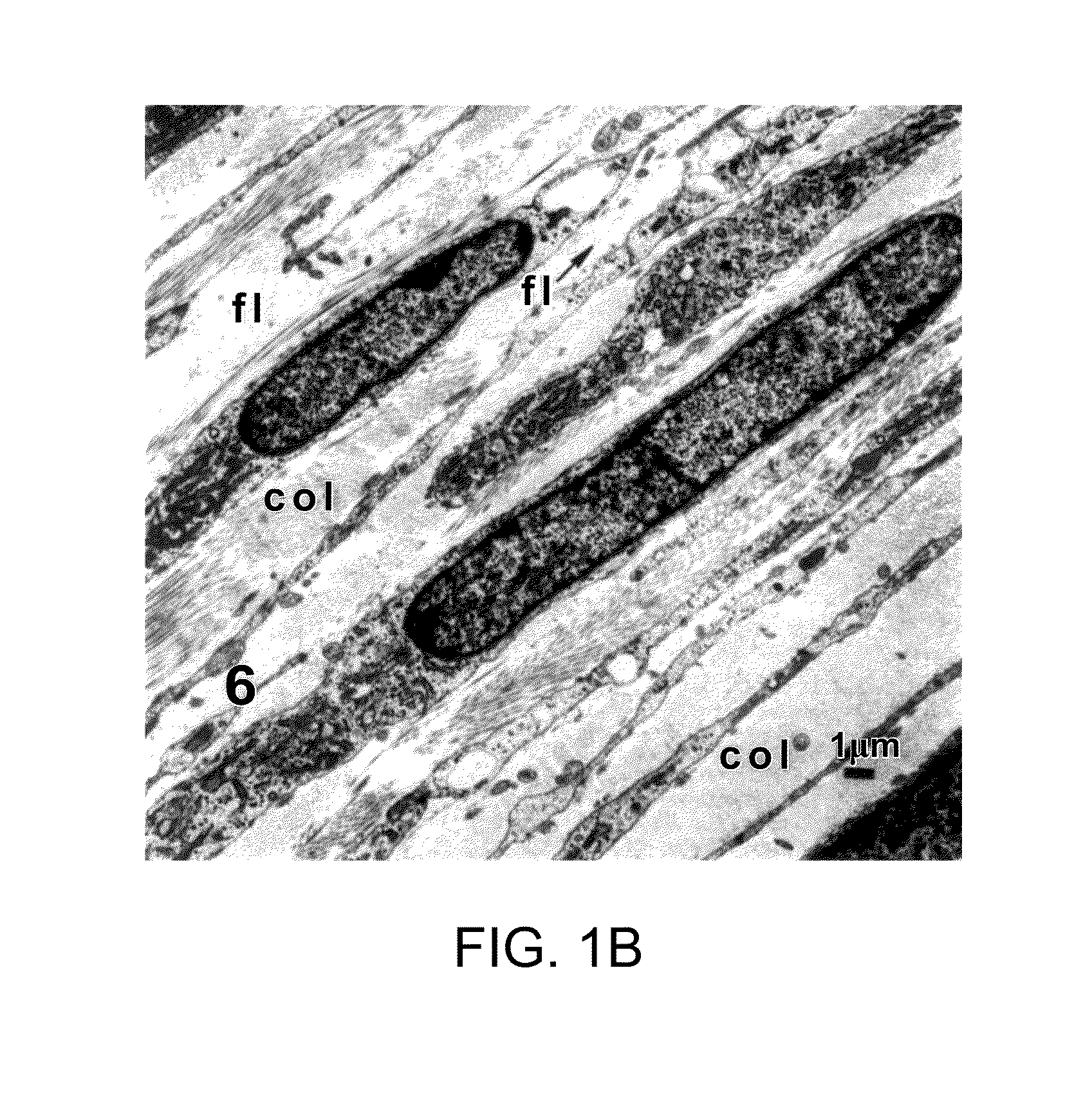Collagen fibrillar construction
a collagen fibrillar and construction technology, applied in the field of tissue engineering and medicine, can solve the problems of hampered approach, no clinically viable constructs, and significant effort expended
- Summary
- Abstract
- Description
- Claims
- Application Information
AI Technical Summary
Benefits of technology
Problems solved by technology
Method used
Image
Examples
example 1
In Vitro Production of Organized Collagen Lamellae using a Scaffold-Free Model of Corneal Stromal Development
[0141]An in vitro model of corneal stromal development was developed as follows. Briefly, primary human corneal fibroblasts by migration from corneal explants in culture) were grown to confluence on a transwell membrane and stimulated to produce matrix with a stable form of ascorbic acid (Guo et al., Invest. Ophthalmol. Vis. Sci. (2007), 48(9):4050-4060). This scaffold-free approach allowed the fibroblasts to self-organize and then stratify, and is the first culture system capable of producing significant quantities of organized lamellae that are morphologically similar to in vivo lamellae in that they alternate in direction. It also shares some features of developing systems, including cell organization and a relatively high ratio of cell volume to matrix volume (at least initially).
[0142]The data obtained demonstrate that highly-organized collagen was synthesized between tw...
example 2
De Novo Production of Sheets of Organized Collagen by Concentration and Confinement
[0145]To generate local, long-range and three dimensional fibril organization, a method was developed using the organizational information encoded into the collagen triple helix. Using this method, confined, patterned arrays of monomers condensed into organized arrays of fibrils upon enzymatic cleavage of collagen propeptides.
[0146]Methods
[0147]Preparation of Collagenous Constructs—Method I.
[0148]3 mg / ml solution of collagen (Inamed biomaterials, Fremont, Calif.) was dialyzed against 40% solution of polyethylene glycol (PEG) (20 kMWCO, Sigma) at 4° C. to reach the concentrations in the range of 140 mg / ml-200 mg / ml (medium concentration). The collagen solution was neutralized (pH 4.5-7) with 1.5 M Trizma based solution (Sigma-Aldrich, St. Louis, Mo.), confined between two coverslips, transferred into a 37° C. incubator, and stored for 6 hrs prior to assessment.
[0149]Preparation of Collagenous Construct...
example 3
[0170]Geometric Guidance Cues Influence the Organizational Behavior of Collagen Fibrils Precipitated from Liquid Crystalline (LC) Phase Solutions of Monomer
[0171]The concentration and precipitation of collagen monomers in the appropriate guiding geometry leads to the formation of fibrillar structures with organizations similar to those found in natural load-bearing tissues.
[0172]A. The Relationship Between Concentration and the Organizational Behavior of Collagen Molecules
[0173]Both long and short range organization of collagen molecules are a function of monomer concentration and confining surface separation; monomer organization is readily translated to precipitated fibrillar organization.
[0174]Methods
[0175]Cold, acidic solutions of the atelo-collagen Type I monomers (Inamed, Fremont, Calif.) are dialyzed against 40% solution of 20 kMWCO polyethylene glycol (PEG) using 3.5 kMWCO dialysis tubing (Spectrum Labs, Rancho Dominguez, Calif.) to obtain the concentrations listed in Table ...
PUM
| Property | Measurement | Unit |
|---|---|---|
| length scale | aaaaa | aaaaa |
| length scale | aaaaa | aaaaa |
| distance | aaaaa | aaaaa |
Abstract
Description
Claims
Application Information
 Login to View More
Login to View More - R&D
- Intellectual Property
- Life Sciences
- Materials
- Tech Scout
- Unparalleled Data Quality
- Higher Quality Content
- 60% Fewer Hallucinations
Browse by: Latest US Patents, China's latest patents, Technical Efficacy Thesaurus, Application Domain, Technology Topic, Popular Technical Reports.
© 2025 PatSnap. All rights reserved.Legal|Privacy policy|Modern Slavery Act Transparency Statement|Sitemap|About US| Contact US: help@patsnap.com



